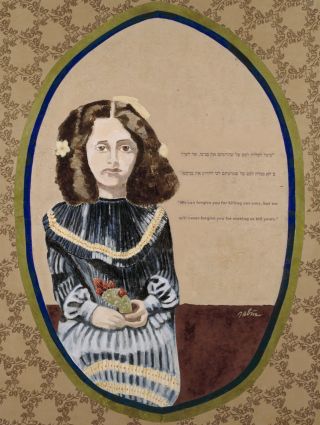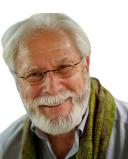Relationships
The Power of Storytelling
Personal Perspective: The key to improving relationships and resolving conflict.
Posted June 6, 2023 Reviewed by Kaja Perina
Key points
- Storytelling primes the pump of expression and listening.
- Sharing narratives are an expression of faith in our humanity and a path to unifying results.
- Storytelling demonstrates that there are many possibilities within our relationships.
- Stories are a means to recognize our interdependency.
Stories are the royal road to the study of relationships. What is important in a story, what is true in it, is not the plot, the things, or the people, but the relationships between them.
—Gregory Bateson
Remember that harmony is inextricably bound up with the conflict from which it sprang.
—Terry Dobson
Pushing back when one is pushed is a cultural habit that stops us from recognizing different ways to minimize conflict. Gregory Bateson described this process as "schismogenesis” which means creating a division. It can take a “complementary” form or behavioral one e.g., the arms race resulting in escalating outcomes as each side attempts to improve their advantage. It can also manifest when one person or group puts another or others in a "symmetrical" submissive pattern such as bullying. Either way it produces injurious consequences.
However, he also emphasized in his seminal book Naven, that conflict is the place where harmony can be attained, in part via storytelling. In his field research with the Iatmul people in New Guinea, he describes a ceremony where two opposing groups mimic each other in a jovial manner to maintain harmony. It shows that there is an expression of faith in our humanity, to embrace even the most powerful of attacks and find a space to produce a unifying result.
When we recognize a connection to others, we are initially drawn into tending to their needs. This serves as a segue to being warmer and more giving by reframing conflict as the grist for creativity. Given the current political and social polarizations in our world and how it affects our lives, we may not have any choice but to search for ways to achieve and sustain relational harmony within our interpersonal and societal endeavors.

Storytelling is exactly what is needed to connect, heal and learn from each other.
Ursula K. Le Guin believed "In the tale, in the telling, we are all one blood. Take the tale in your teeth, then, and bite till the blood runs, hoping it’s not poison; and we will all come to the end together, and even to the beginning: living, as we do, in the middle." Here lies the key to why we should share who we are through narratives. It is an innate way to identify and celebrate all our experiences from our past and present to influence the future.
Stories consist of multitudes of aspirations, emotions, disappointments, fears and dreams that prime the pump of expression and listening. They embody a natural opportunity for useful information to emerge as resources that will make a difference in whatever you choose to pursue. It is as Rebecca Solnit suggests in her Field Guide to Getting Lost, that "the things we want are transformative, and we don’t know or only think we know what is on the other side of that transformation. Love, wisdom,
grace, inspiration- how do we go about finding these things that are in some ways about extending the boundaries of the self into unknown territory . . . "
Stories provide poetic forms to explore the influences of legacy; the mystical influential and aesthetic energy from our families of origin as well as the collective reservoir of our human evolution. They bring to life the contextual interchanges that eventually give relational meaning to ethnicity, race, class, culture, identity and wealth.
C.S. Lewis writes in The Weight Of Glory, that "behind the cotton wool is hidden in a pattern… the whole world is a work of art… there is no Shakespeare… no Beethoven… no God; we are the words; we are the music; we are the thing itself." When Arthur Miller was asked about how he created plays, his response was, “It’s the careful construction of hard actions, facts, the geometry of relationships.”
The narratives we all have are connected to our wellness and offer clues on how we can adjust our vulnerability and growth. Nora Bateson, President of the International Bateson Institute describes this process as "'symmathesy" which “. . .generates mutual learning contexts through the process of interaction between multiple variables in a living entity." Author Johanna Slivinske believes such interactions allow people to “. . . gain insight that leads to behavioral change, and improvements in the quality of their lives. Stories may be told through writing, through art, through photos, or verbally. There is more than one way to tell a story."
What is inherent in storytelling is the stochastic process that champions reality by signifying, despite aiming at a logical end point, that we inevitably miss anyway. It is by pure chance and randomness that we can come close to depicting our wider involvement with nature. John Steinbeck eloquently points out in The Log From The Sea Of Cortez how observing and elucidating can bring to life narrative information about the interrelationships that make up the complexities of our lives. "If the fish sounds and nearly escapes and finally comes in over the rail, his colors pulsing and his tail beating in the air, a whole new relational externality has come to being - an entity which is more than the sum of the fish plus the fisherman."
So how does storytelling provide the segue to better relations and provide a forum for conflict resolution?Try telling a story - i.e.- be it a narrative, poem or in another artistic medium - from your personal experience to another or group using the following prompts and then listen to the stories that you have elicited:
- Have you ever been in a conflict situation where the outcome could have been less injurious had you considered other options?
- How do the lives of your grandparents (i.e. being in the armed services during World War II or in the labor force, etc.) give credence or opposition to your present views on society?
- How would creating win-win alternatives influence your day-to-day interactions? What strategies have you used in your interpersonal relations?
- In what ways would viewing conflict as a means to harmony influence and/or create changes in your daily life?
- How can you transform being victorious from a personal accomplishment to being beneficial for everyone in your life?
- What modalities make you feel better or worse in a situation where you are uncomfortable? What type of activities do you avoid or seek?
In conclusion, consider the words of Carl Jung: “The meeting of two personalities is like the contact of two chemical substances, both are transformed.”




